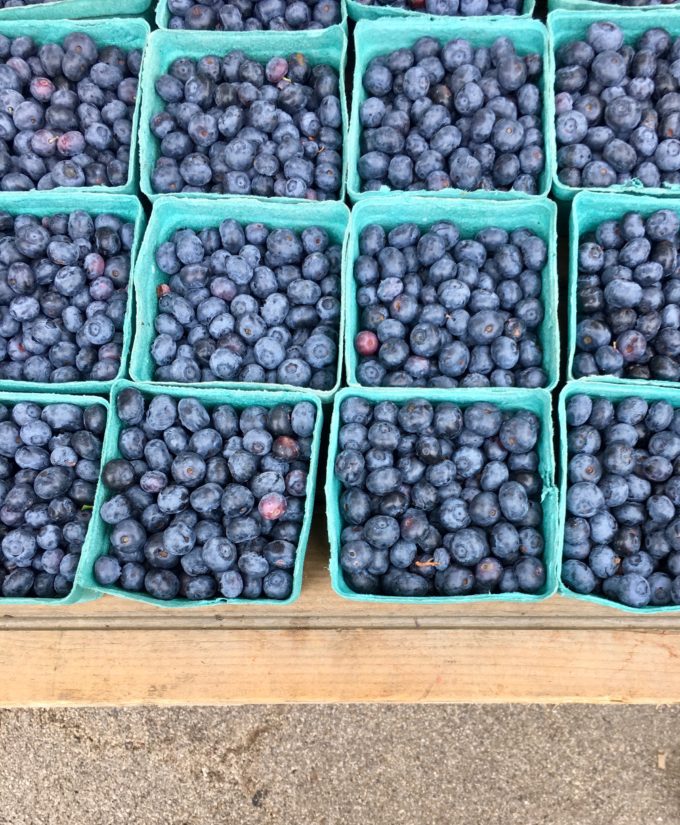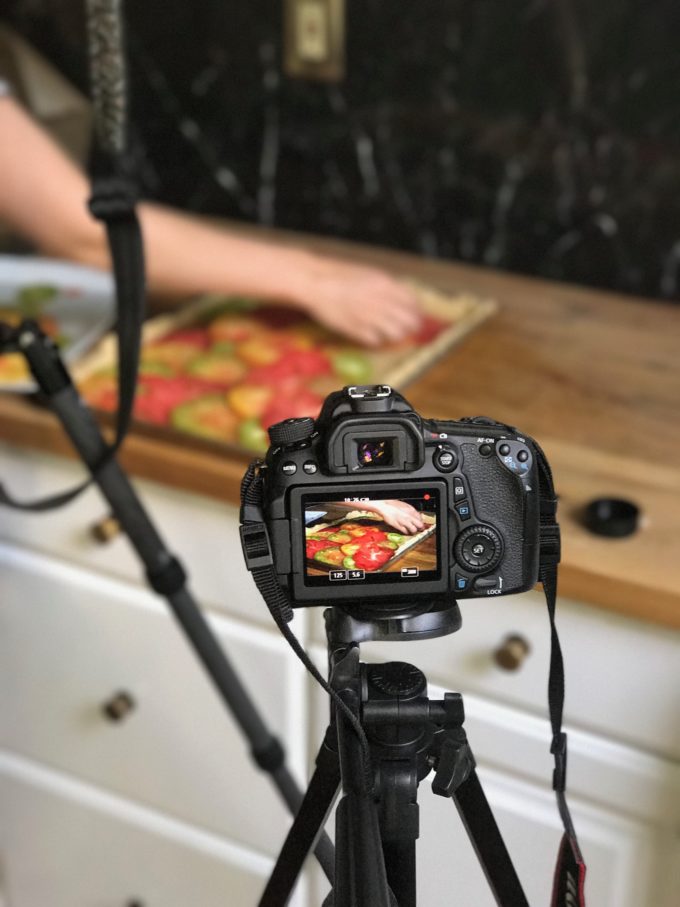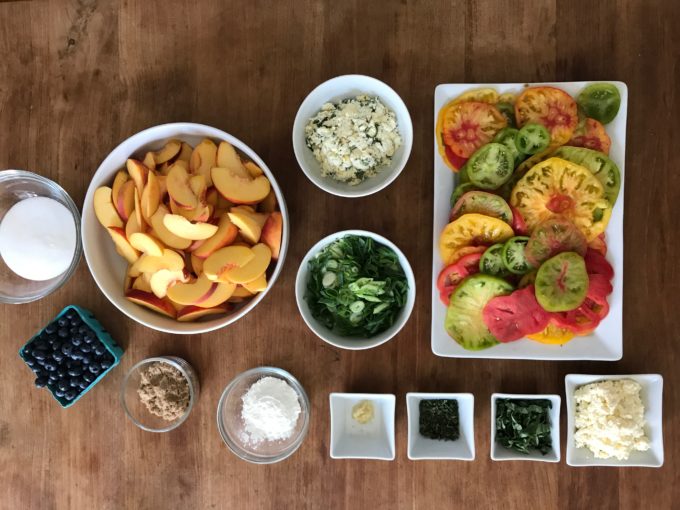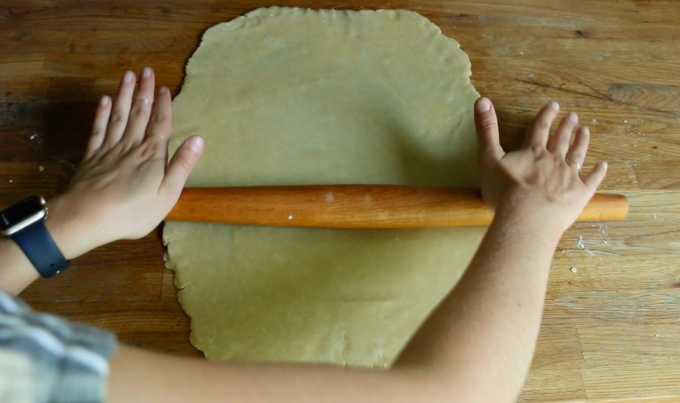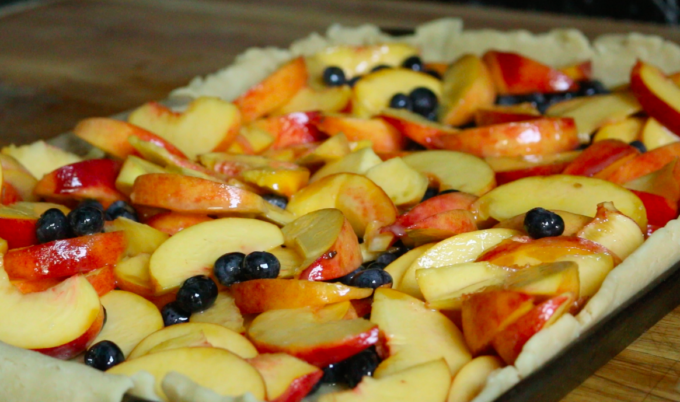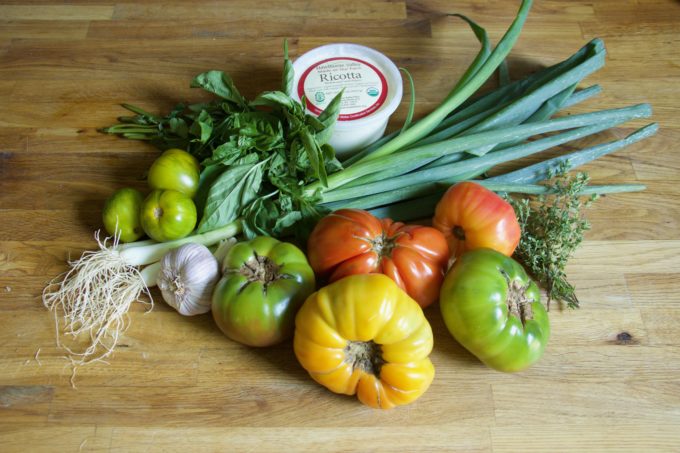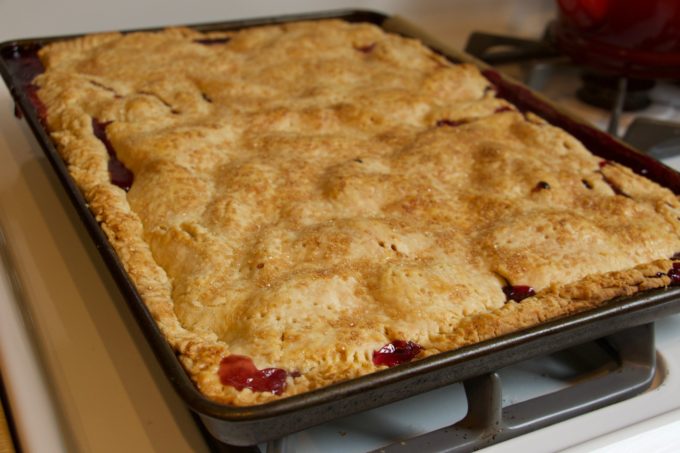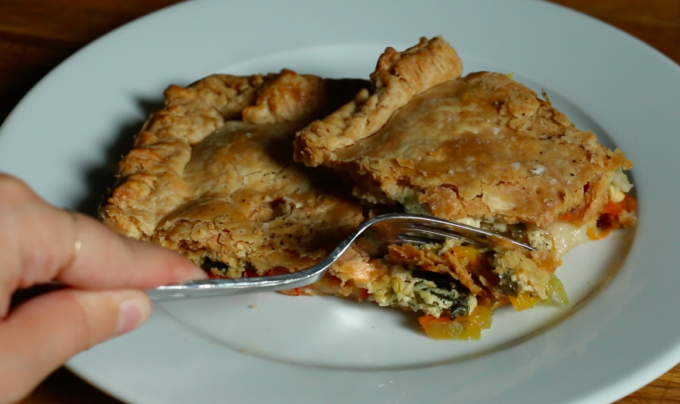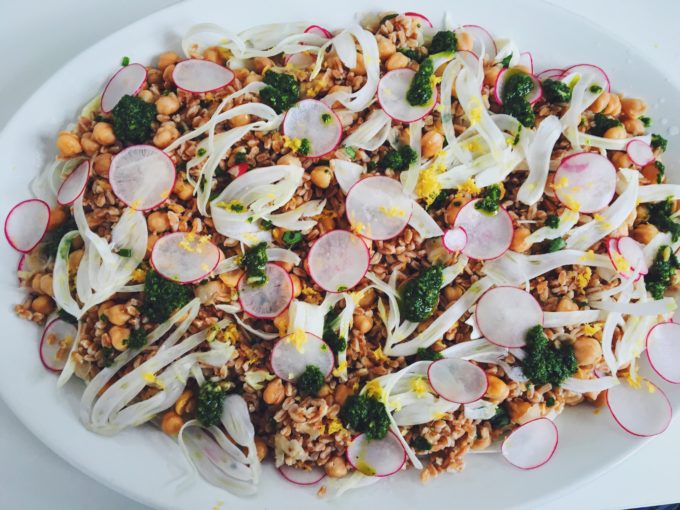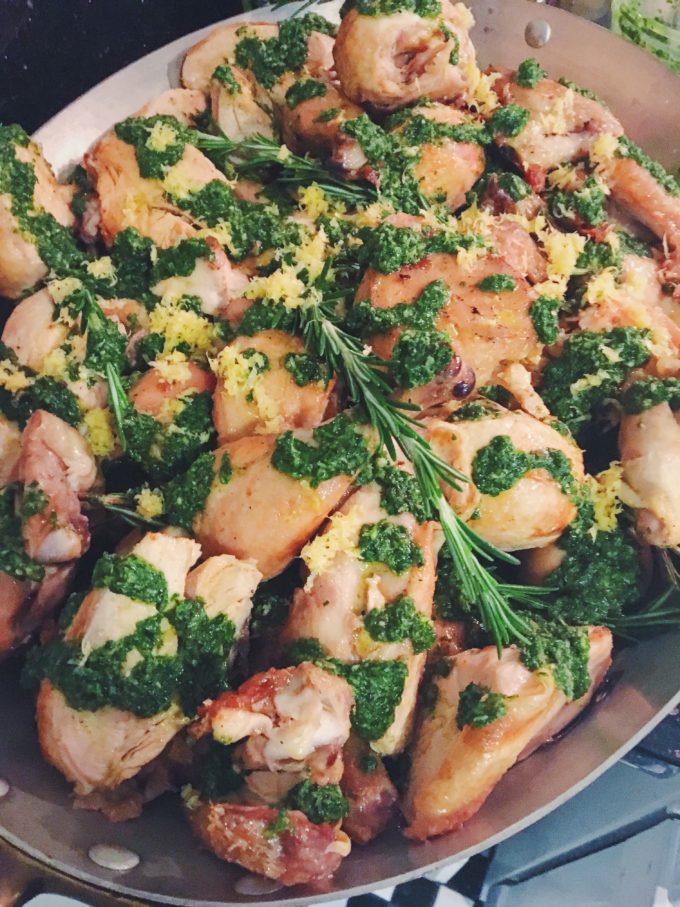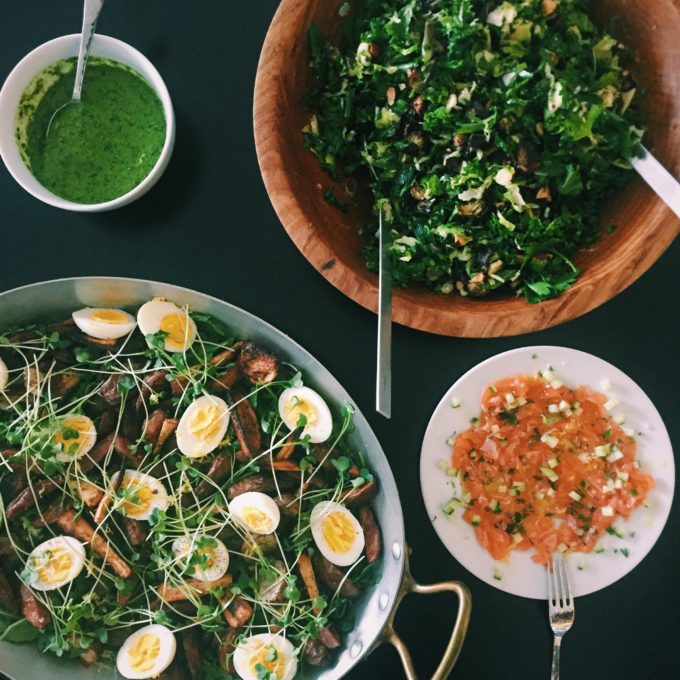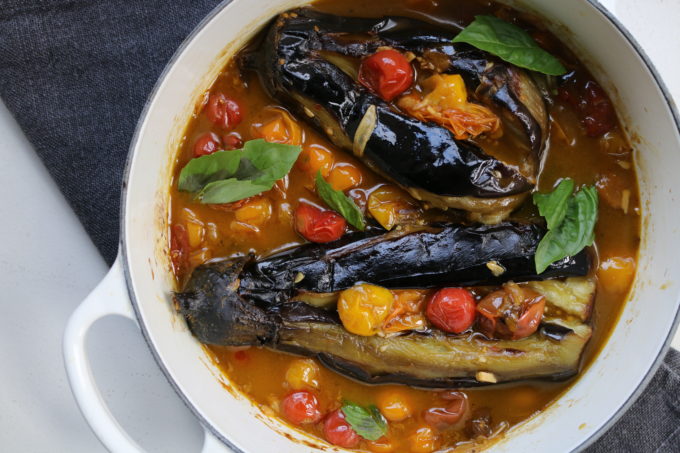
For those who love to cook, there is possibly no outing quite as enjoyable as a trip to the farmers’ market. Getting to see what’s at its peak and speak with the people who grew it feels like a privilege in comparison to shopping at the grocery store.
I like to go without a plan, grab whatever looks best and then spend my walk home daydreaming about what I can make. While I have a terrible memory when it comes to things like names, my brain has a crystal clear index of every recipe I’ve ever read, most of the ingredients within it and where I can find it. It also catalogs all food images from places like Instagram and food magazines.
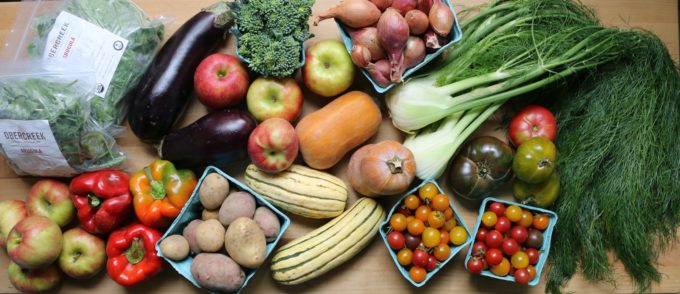
This week, when I scored the most beautiful, deeply purple eggplants with taut, shiny skin and cherry tomatoes so sweet I could have popped an entire pint as if they were berries, I was reminded of a picture I’d seen on Canal House’s Instagram feed.
These days, I prefer to cook from pictures rather than recipes. The former allows for creativity and spontaneity, while the latter is time consuming (re-referring to the written word) and/or disappointing (I usually know how to produce the flavors I prefer). As the famous Italian chef Lidia Bastianich said in a recent interview, “Release yourself from the recipe!”
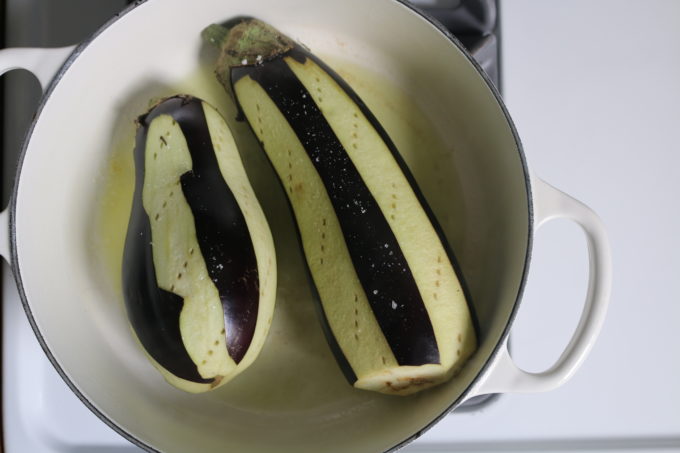
So, with that in mind, I hit my kitchen to make a braised eggplant dish sweet with cherry tomatoes, rich with olive oil, and spicy with garlic and red pepper flakes. Chris and I sat down to dinner with the dutch oven between us, a fresh ball of burrata cheese, sliced crosswise and drizzled with our best Italian extra virgin olive oil, and pan-fried and garlic-rubbed peasant bread to serve as a bed for it all. I also made a shaved fennel and arugula salad showered with plenty of lemon juice and more olive oil because I always like to have something bright to cut through something so rich.
This is the rustic fair that dreams are made of.
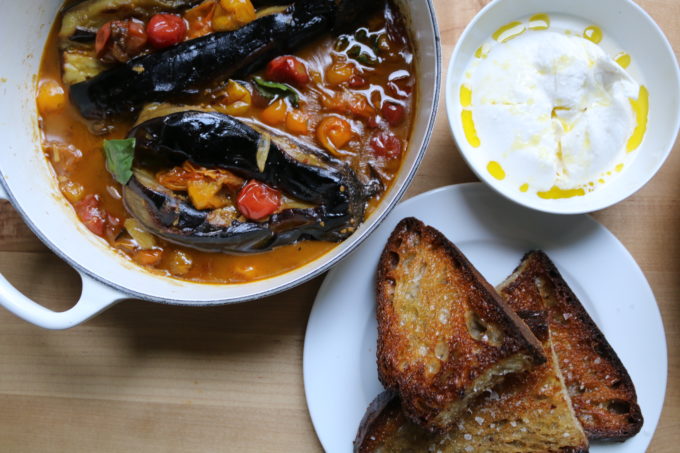
EGGPLANT BRAISED WITH CHERRY TOMATOES AND GARLIC
Ingredients
2 small to medium eggplant
4 cloved garlic, thinly sliced
¼ tsp red chile flakes
4 tablespoons olive oil
2 pints cherry tomatoes, left whole
Several handfuls of basil, torn
1 ball burrata or a couple of balls of fresh mozzarella (optional)
Grilled or pan-fried and bread rubbed with garlic (peasant loaf, ciabatta, or any other bread you like)
Salt and pepper
Directions
Prep the eggplant: Peel long strips down the eggplant from stem to end, leaving them with a zebra print. Next, make a partial slit lengthwise down the center of the eggplant but try not to cut all the way through. This is just so the flavorful broth has an easier time penetrating the eggplant. Season them lightly with salt and freshly ground pepper, massaging them into the eggplant a bit.
Preheat a braising pot over medium heat. Add 2 tablespoons of olive oil. Once hot, pan fry the eggplants, turning them every two minutes until they are well-browned on all sides. Remove them to a plate.
Add remaining two tablespoons olive oil and add 4 thinly sliced garlic cloves and a generous pinch of red pepper flakes. Once garlic is very lightly golden, add in the 2 pint whole cherry tomatoes, a generous pinch of salt and a few grinds of black pepper, and stir to combine. Place top on braising pot and let it do its thing over medium-low heat.
After about 20 minutes, most of the cherry tomatoes will have popped open, producing a juicy liquid. Taste it and correct seasoning with more salt if necessary. Carefully add the eggplant into the juicy tomatoes, slit side up and ladle a little of the braising liquid inside the eggplant. Add a sprig of basil, pushing it into the liquid, cover and continue to braise for 20 minutes. At this point, the eggplant will be meltingly tender and flavorful.
To serve, remove the sprig of basil and add a fresh shower of leaves over the braise. Present the whole pot on the table with several spoons to dig in, grilled garlic-rubbed bread and burrata or sliced fresh mozzarella. Enjoy!
Serves 4 (Any leftovers can be smashed into a delicious pasta sauce for later in the week!)
